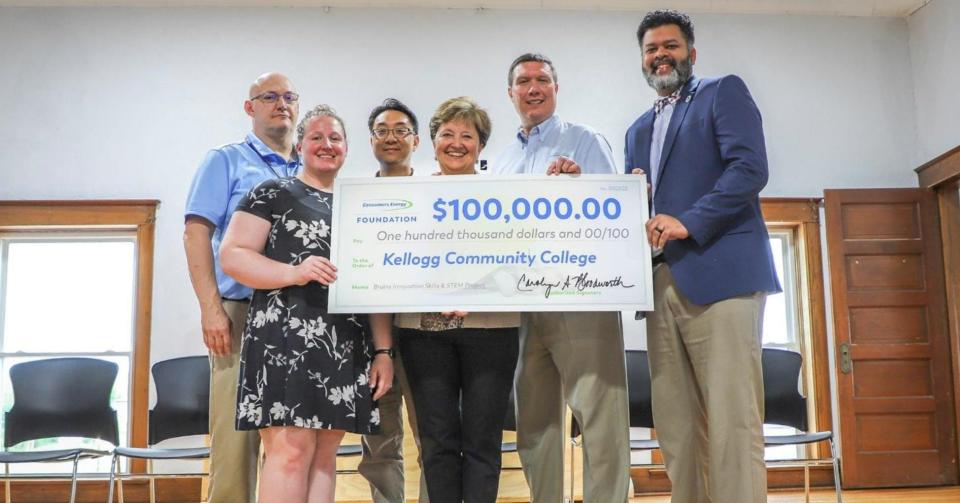Jun. 11—Across 2021 and 2022, one in two New Mexican children experienced an adverse childhood experience — a traumatic experience that could include abuse, neglect or witnessing domestic violence, according to a national report.
The state tied with Mississippi for the highest rate of kids who had experienced such trauma.
It was one of many bleak statistics in the 2024 Kids Count Data Book from the Annie E. Casey Foundation, which measures several indicators of child well-being, including education, health and economic well-being.
Out of all 50 states, New Mexico ranked 50th in education, 48th in economic well-being, 44th in health and 49th in family and community. Forty-one percent of New Mexico students between 2021 and 2022 were chronically absent.
The state ranked last in overall childhood well-being.
“Our kids are not OK,” said Maralyn Beck, founder and executive director of New Mexico Child First Network, which aims to improve foster care in the state. “Solutions exist to do better, but we need political will and political courage to push forward solutions that we know will improve outcomes for our children.”
This isn’t the first time New Mexico has swept the rankings floor. However, some child welfare organizations and service providers say the data has limitations and may not reflect more recent investments into child welfare.
ACE: What does it mean, and how does it impact kids?
George Davis, a child psychologist who has worked with the state Children, Youth and Families Department and children in the juvenile justice system, said adverse childhood experiences, or ACE, can disrupt normal child development.
Davis said children who are separated from their parents, for example, may later show struggles with self-regulation through aggression, trusting adults, trouble making friends and even challenges sitting still or paying attention in school.
“It undermines the foundations that you need to progress in life in very fundamental kinds of ways,” Davis said.
Poverty alone, Davis said, is not an ACE. But it can be associated with other traumatic experiences. The state has made some improvements in the childhood poverty rate, the report noted, but it still remained at about 24% in 2022, 8% higher than the national rate.
Davis said that addressing statewide gaps in health care and substance abuse treatment, as well as poverty, is needed to prevent ACE.
But although Davis said he sees a political interest in preventing childhood trauma, the next steps may seem unclear.
“I think people don’t know what to do at the state level,” Davis said. “But I think there definitely is the will.”
The most vulnerable: Kids experiencing homelessness, living in foster care
Jennifer Ramo, founder of New Mexico Appleseed, an organization focused on reducing child poverty, said homelessness can compound some of the issues raised in the report. Transportation can be difficult for children who are homeless, Ramo said, contributing to absenteeism. And even if they make it into the classroom, those factors can make it difficult to learn.
“The teacher and the students, they’re both outgunned by poverty,” Ramo said. “… In general, I don’t know how you can expect these kids to learn and be ready emotionally, and be focused, when maybe they haven’t eaten or they were sleeping on the floor or they have four people in their bed.”
Beck said that children in foster care also have lower educational outcomes and are at the “highest risk.” The report, Beck said, highlights the average New Mexican student — and kids in foster care are even more vulnerable.
“The kids I’m working with are the most vulnerable,” Beck said. “Kids in foster care have the lowest education outcomes. One in seven kids will graduate from high school. One in 50 will graduate from college.”
Data limitations
Some said the report’s dataset has limitations.
Ramo said every time the Kids Count report comes out, her heart sinks. She said she’d like to see the ranking system come to an end, especially with the state’s “economic reality.” It also doesn’t suggest ways to grow, she said.
“We just get told, once again, how terrible we are, and there’s actually some pretty amazing work happening in New Mexico that we can scale and replicate,” Ramo said. “It isn’t that we should ignore the data. We definitely need data, and we need to understand the problems. But I think that solution-oriented data is much more effective.”
The data is a couple of years behind, said Gabrielle Uballez, executive director of New Mexico Voices for Children. That means the dataset includes several pandemic-era years, and the effect of some recent investments may not be visible in the data for years to come.
Uballez pointed to the creation of the Early Childhood Education and Care Department, which officially launched in summer 2020, and a 2022 voter-approved constitutional amendment to increase spending on early childhood education.
“We should continue to make those investments,” Uballez said. “Even though the results aren’t showing up this year or next year, we have a lot of faith that they will show up over the long term. So we should not be discouraged.”
But Beck said there’s no time to wait. A special session on child welfare, Beck said, is needed.
“This is a public health crisis,” Beck said. “We need our elected officials to start recognizing it as such and acting with the fierce urgency that this public health crisis deserves.”
Gaps and solutions
Basic guaranteed income is something NM Appleseed is pushing for, Ramo said, as well as a statewide program to pay kids to show up to school.
“Most families are working and trying to get multiple jobs, and it’s still not adding up,” Ramo said. “They still are not meeting the cost of living. … We can’t keep doing the same thing over and over and expecting a different outcome.”
A test program in two school districts in northern New Mexico paid students $500 per month if they attended tutoring, attended school 90% of the time and attended one socio-emotional meeting.
And it worked, Ramo said.
“They did it,” Ramo said. “It’s a pretty profound impact. Between both districts, it was 93% (graduation rate for the participants).”
Lorilynn Violanta, co-executive director of NMCAN, said the young people and families the organization works with often experience problems accessing available services.
“When I talk about the accessibility, I mean it in all different components,” Violanta said. “Not only is the process easy to access, but then, when the family or the young person is accessing resources, how do we still meet them where they are, with the dignity they deserve?”
NMCAN works with young people impacted by homelessness, foster care and the juvenile justice system — people with “complex needs,” Violanta said, that data may not reflect. She said those very young people can help bring insight to child welfare issues, especially if they have lower participation rates than expected.
“Sometimes programs, as well-intentioned as they are, aren’t necessarily responding to the needs and the realities of young people and families,” Violanta said.
Signup bonus from





